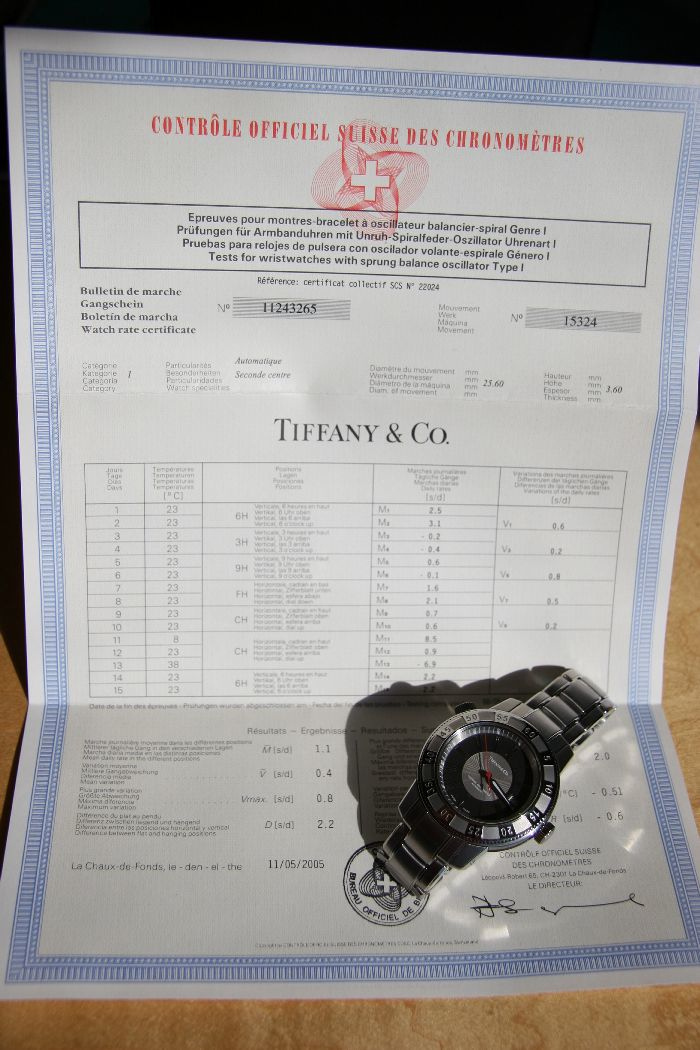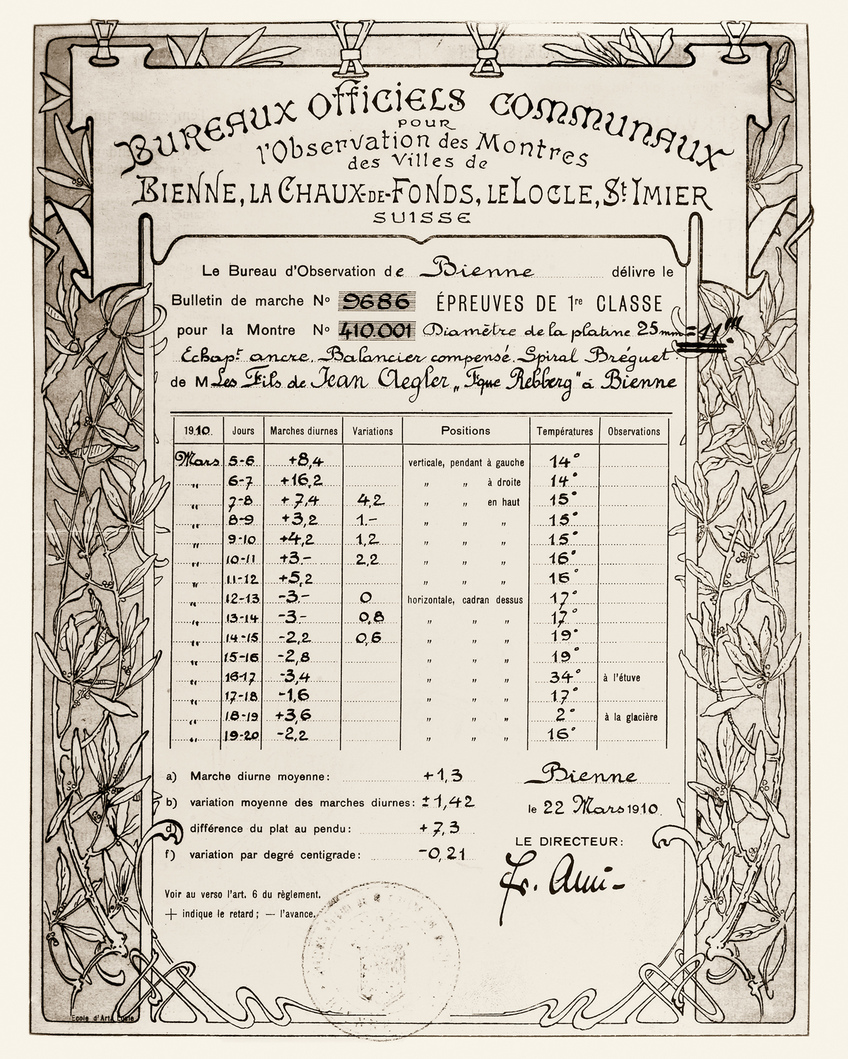

Swiss precision: the COSC, official and Swiss (Part 1)
There is no other institution in the world that can test such a volume of watch movements and industrial production to see if they comply with precision norm ISO 3159.
Precision is included in Swiss law under the copyrighted name of “certified chronometer” and is measured according to the ISO 3159 international standard. The COSC (“Contrôle Officiel Suisse des Chronomètres”) ensures that mechanical wristwatches abide by the aforementioned rule and furthermore applies internal instructions derived from it to quartz and pocket watches as well as marine chronometers. Each year, the non-profit organization issues over 1,700,000 certificates through its Official Offices or BOs (Bureaux Officiels). This is made possible thanks to exemplary automation and to the special measuring equipment developed by its laboratories. The organization aims to meet the requirements in terms of precision, results follow-up, optimal measuring conditions and the potential eventualities of uninterrupted production.
Creation and Official Centers (BOs)
The COSC “Contrôle Officiel Suisse des Chronomètres” is a non-profit association that was created in 1973 by the Federation of the Swiss Watch Industry (FH) and five watchmaking districts (namely Geneva, Vaud, Neuchâtel, Bern and Solothurn). The aim was to standardize their practices and their prices. The organization is not subsidized but self-financed by its own activities. Whilst it does not publish its annual budget, it is known that it invests approximately CHF 1M per year in upgrading its equipment and it employs around seventy people. The COSC’s BOs were established in three former laboratories in Bienne, Le Locle and Saint-Imier. Their mission is to carry out chronometric tests and to issue chronometer certificates for third parties.

The BOs offices are accredited the SCS (Swiss Calibration Service) according to the ISO 17025 norm by the SAS (Swiss Accreditation Service). The SAS is the only Swiss authority empowered to award this accreditation on the basis of audits. Each BO can test between 30,000 and 40,000 movements every day. Since the tests last 16 days – including Sundays and public holidays – the BOs activity is continuous.
All candidate movements must be sent to the COSC’s premises, as carrying out tests elsewhere, say in a manufacture, is strictly against the COSC’s ethics.Furthermore, only movements that meet the “Swiss Made” label criteria are eligible for tests.
The costs of precision
Being a non-profit organization, the COSC can set the test fees at a particularly reasonable price. The entrance fee is approximately CHF50 per series, irrespective of the number of pieces it contains, which can go from 1 and up to 500 pieces. It costs less than CHF 10 to submit one piece to a 16-day test in 5 positions and to 3 different temperatures ranging from 8°C to 38°C.
As we can see, the price of the test is more than reasonable, but is that all? Well, not really. Actually, in order to calculate the final price for the obtention of the chronometer certificate, we need to add the huge investments manufactures have to make beforehand in order to ensure their movements stand a chance. Take airline pilots, like COSC’s former director Jean-Yves Soguel. It is not the actual examination that is expensive but the time and means invested to pass it.
Therefore, the cost of certification represents only a very small percentage of the chronometer’s production cost. The COSC does not add any direct value to the movements, but it provides scientific and official certification that the piece’s precision has been assessed and that the results shown are accurate. That is what confers solid value to these movements.
In other words, it is the manufacture and not the COSC that pays the difference in cost price between a standard quality movement and a chronometer. Everything else is just marketing and communication. However, in a field where brand individualism is the norm, a certification whose value is undisputedly acknowledged by the general public, and not only expert collectors, has a very bright future.

Watchmaking history before the COSC
It all started at the end of the 19th century, when watch manufacturers wanted to formalize the guarantee of their watches’ precision. To this end, seven laboratories were created to assess (observe) and certify watches.
“In fact, certification did not exist in the 19th century. This came about later, during the 20th century. In the 19th Century there was only a general bulletin order where the reports on a watch’s functioning upon observation were recorded. That did not have the same value a certificate has nowadays”, explains Andreas Wyss, CEO of the COSC. Although the seven laboratories came about due to the corporation, they started operating with the help of watchmaking schools and/or technical and/or mechanical schools. These guaranteed the laboratories crucial neutrality and provided powerful equipment that was already at the service of the community, of trained professionals and of students to different extents according to their status.





